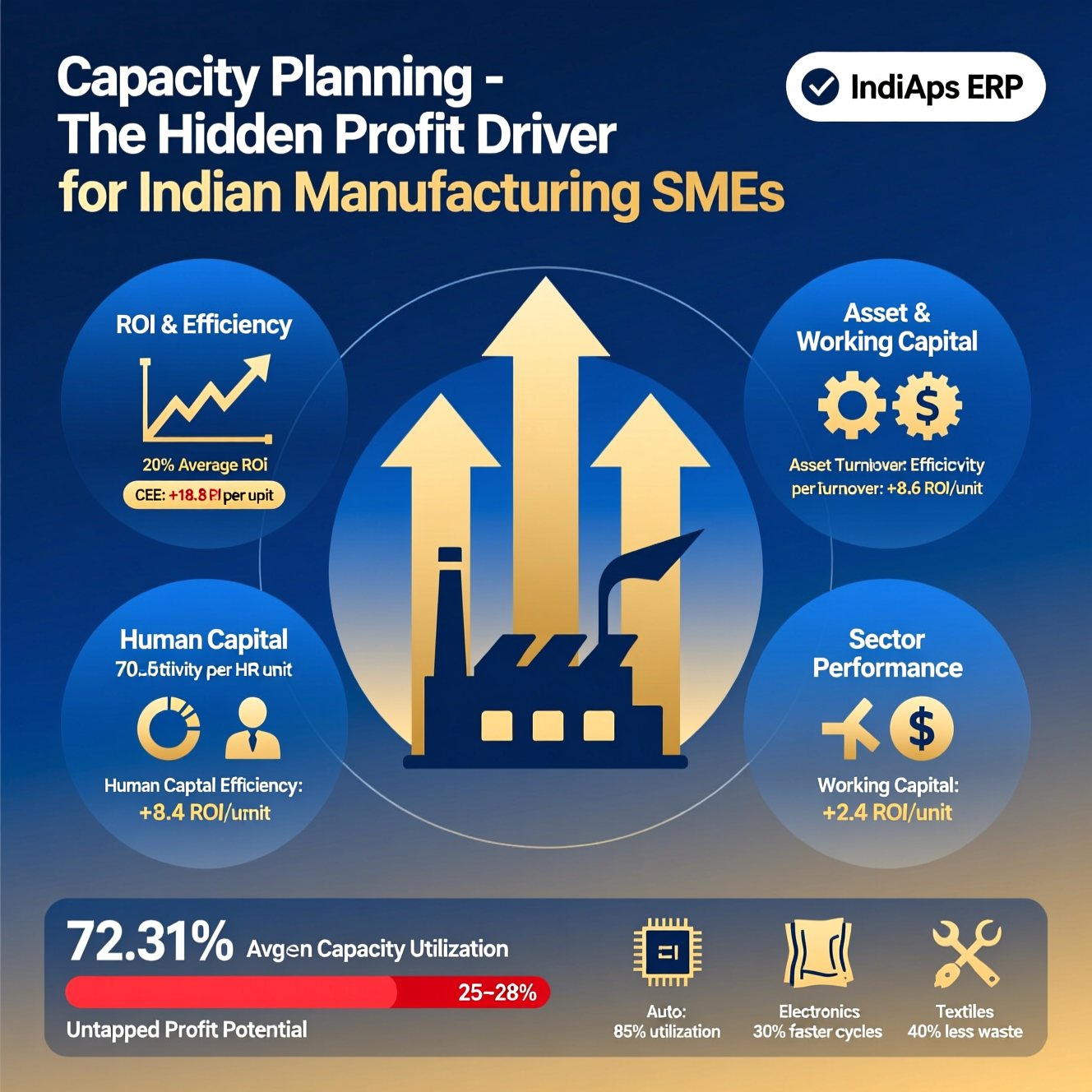Why Capacity Planning Matters
Strategic capacity planning delivers measurable profit improvements for Indian manufacturing SMEs by optimizing resources and enhancing operational efficiency—without external subsidies or support.
Profit Improvements
Independent studies of 100 Indian SMEs across manufacturing sectors revealed compelling results:
20% Avg ROI
Achieved by SMEs with effective capacity management.
+18.8 ROI Units
Per unit increase in Capital Employed Efficiency (CEE).
+8.4 ROI Units
Per unit increase in Human Capital Efficiency (HCE).
Profitability Enhancement Mechanisms
Capital Efficiency Optimization
Productivity Improvements
Sector-Specific Achievements
Different manufacturing segments show strong outcomes when implementing systematic capacity planning:
- Auto components: higher utilization via structured planning
- Electronics: improved delivery schedules and quality consistency
- Textile & garments: reduced waste and better order fulfillment
Capacity Utilization Trends
Analysis of 319 manufacturing companies over 14 years shows average utilization of 72.31%, leaving 25–28% unutilized capacity—an immediate profit opportunity. Capacity utilization improved at a 0.829% CAGR, but significant upside remains.
Industry-Specific Applications
Automotive Components
- Improved OEM relationships and delivery performance via better scheduling
- Quality consistency meeting automotive industry standards
Electronics and Components
- Reduced cycle times through optimized capacity allocation
- Better inventory management reducing carrying costs
- Improved customer satisfaction with reliable delivery schedules
Precision Engineering
- Enhanced planning accuracy and reduced setup times
- Lower operating costs via efficient resource utilization
Phased Capacity Enhancement
Assessment Phase
Conduct capacity utilization audits, identify bottlenecks and inefficiencies, and establish baseline metrics.
Planning Phase
Build capacity enhancement roadmaps aligned with demand, integrate forecasting with production planning, and define resource allocation strategies.
Execution Phase
Deploy capacity planning tools and technologies, train workforce on optimized processes, and establish continuous monitoring systems.
Success Factors
Management Commitment
Leadership-backed implementation sustains capacity planning outcomes and drives continuous improvement.
Workforce Development
Human Capital Efficiency shows the strongest correlation with productivity—invest in targeted training.
Technology Integration
SMEs leveraging digital capacity tools achieve better performance and faster decisions.
Financial Management
Effective working capital and leverage optimization contribute directly to improved ROI.

